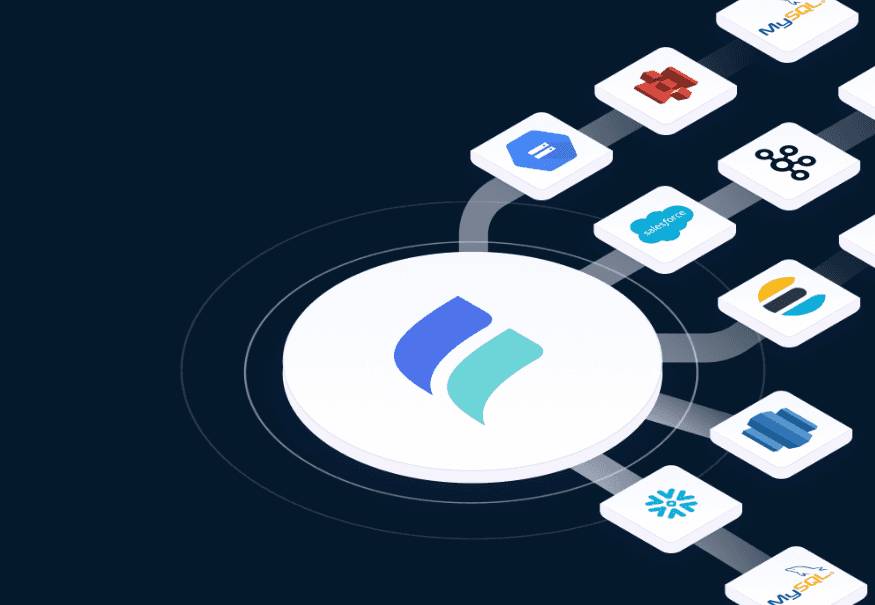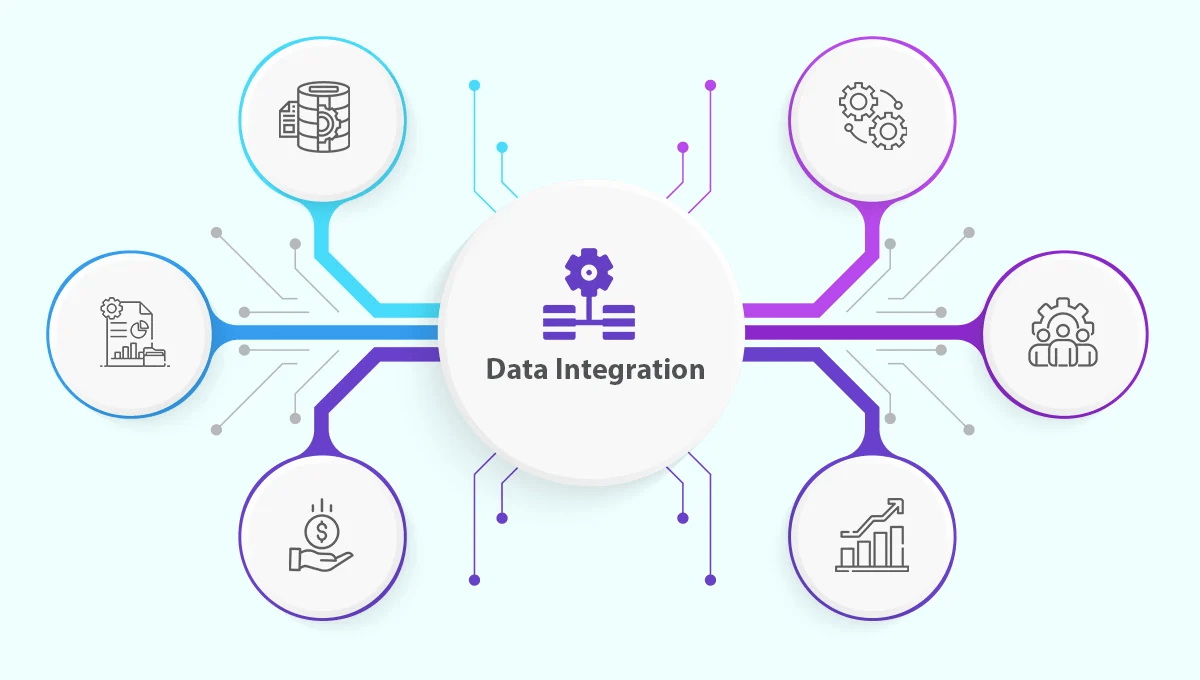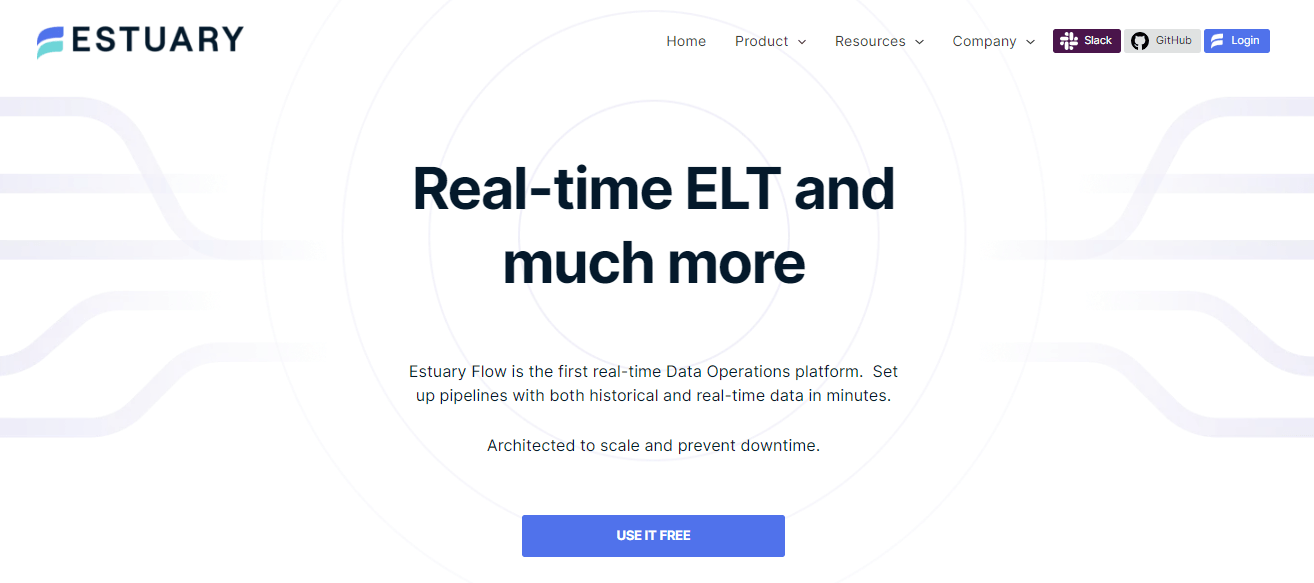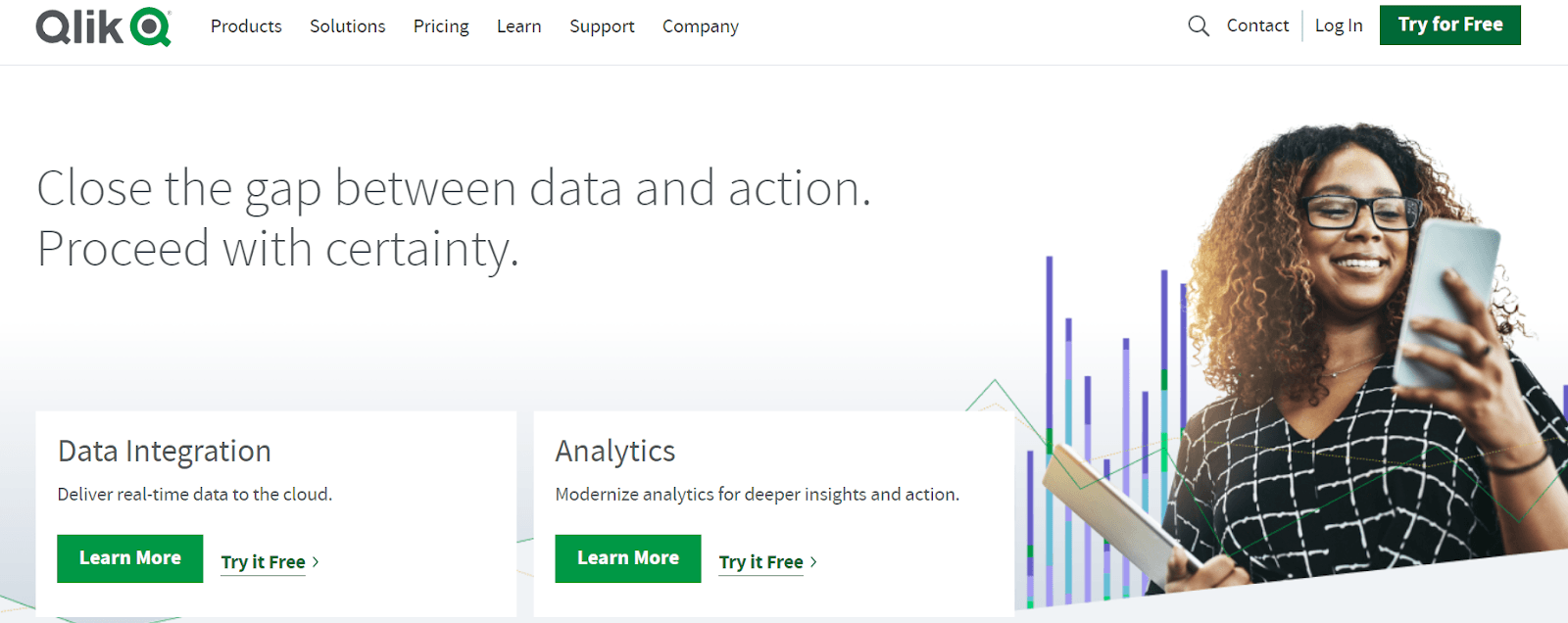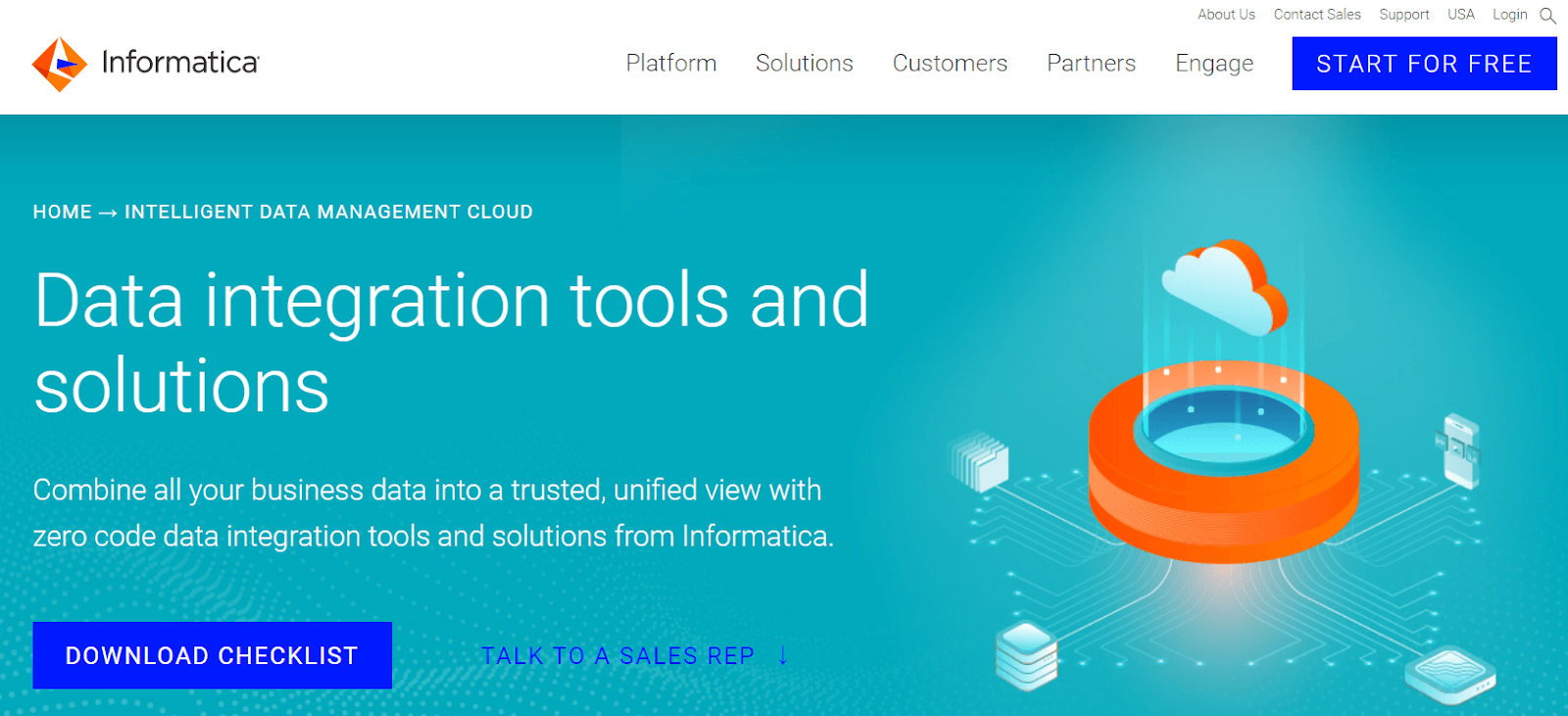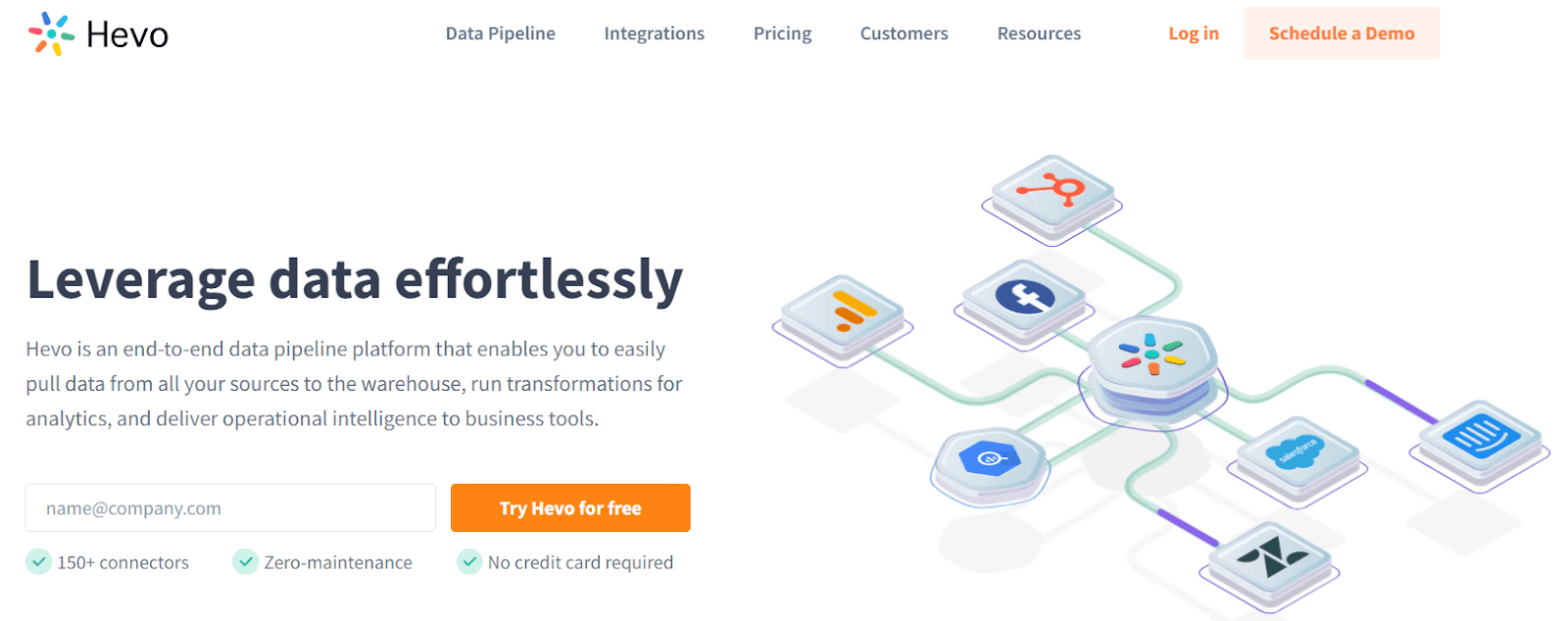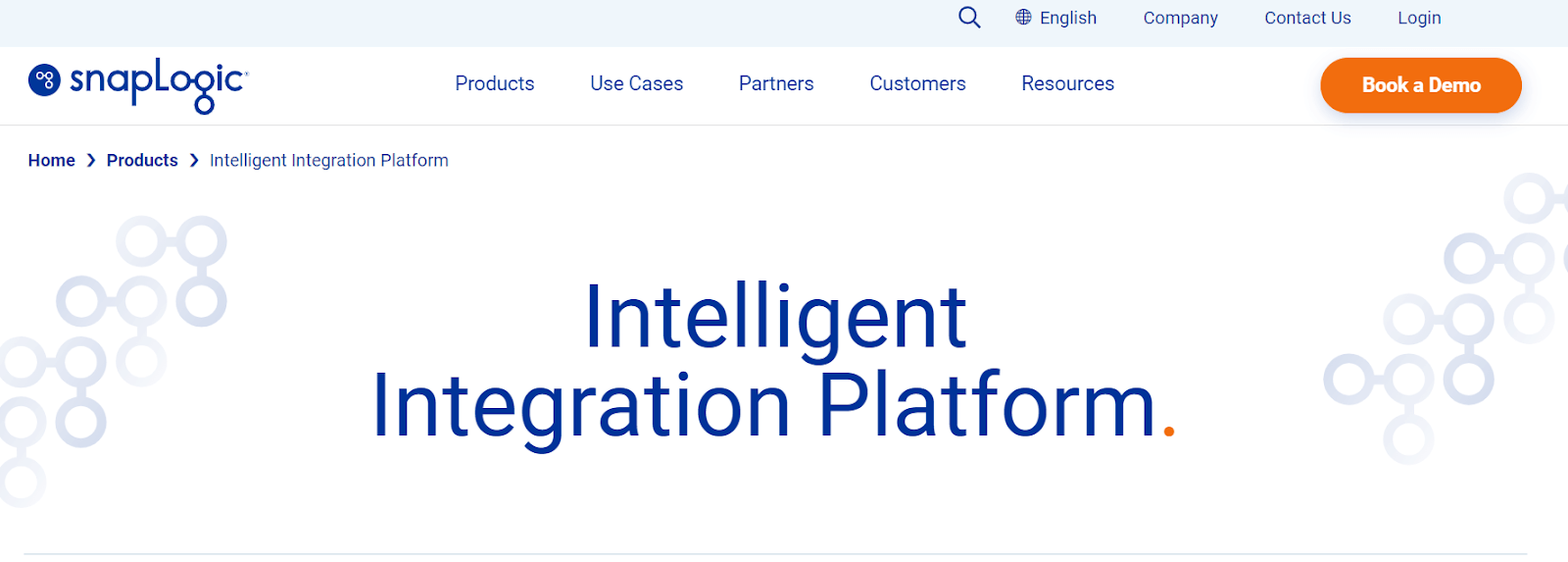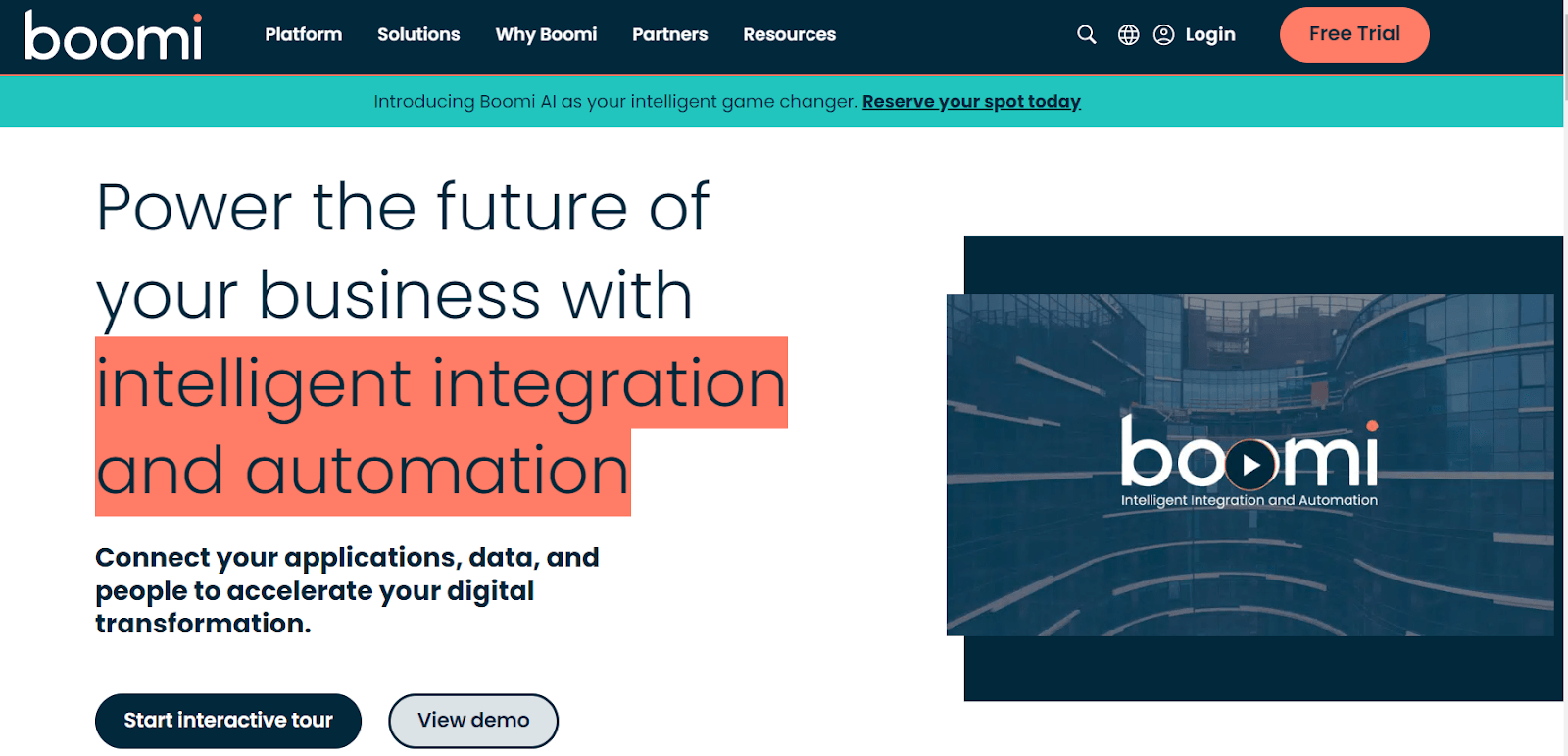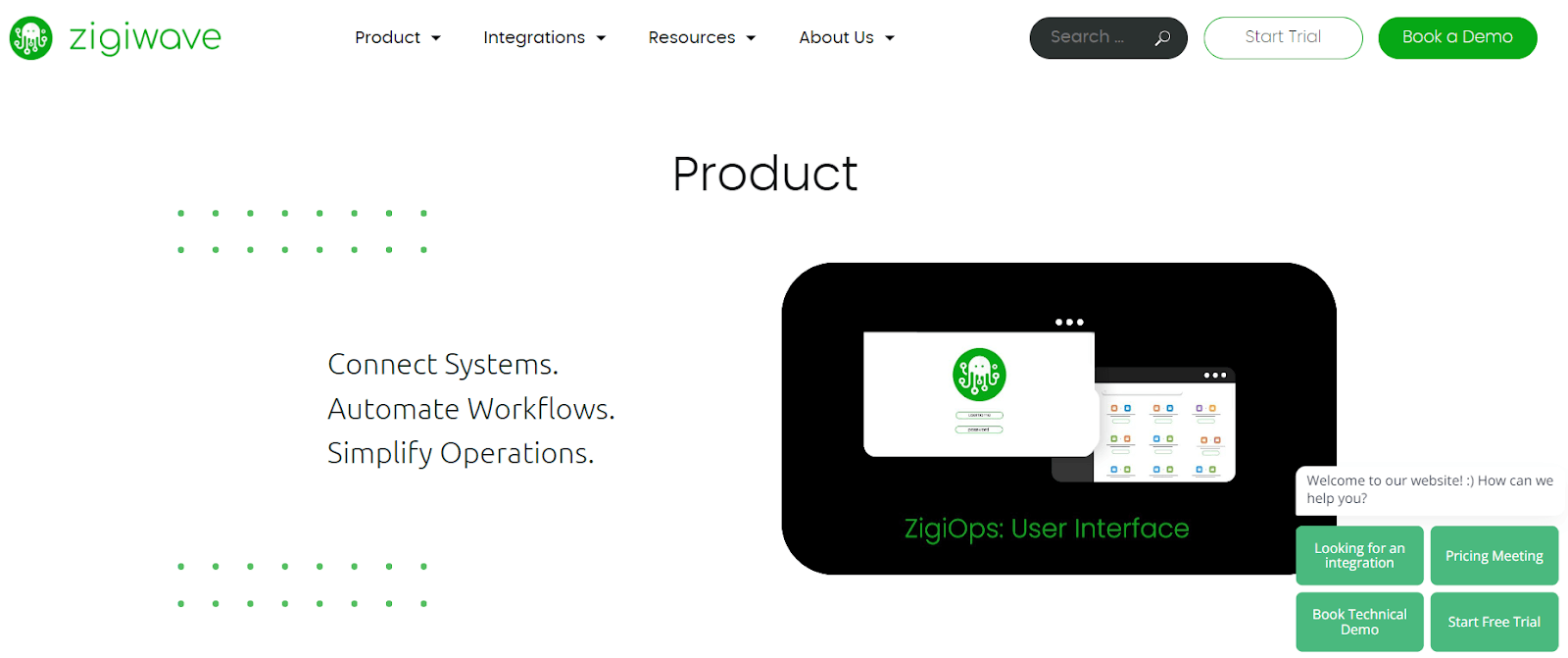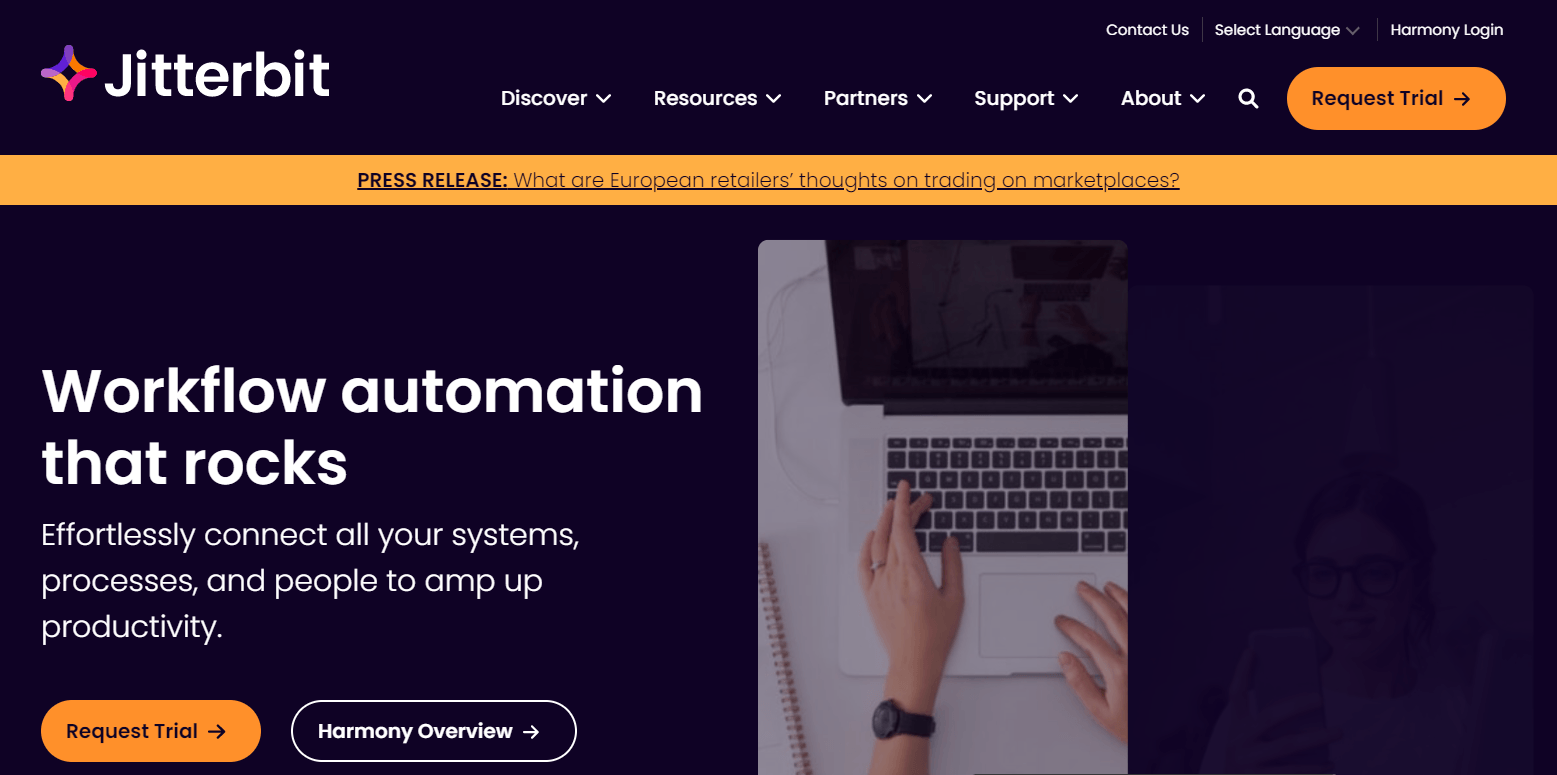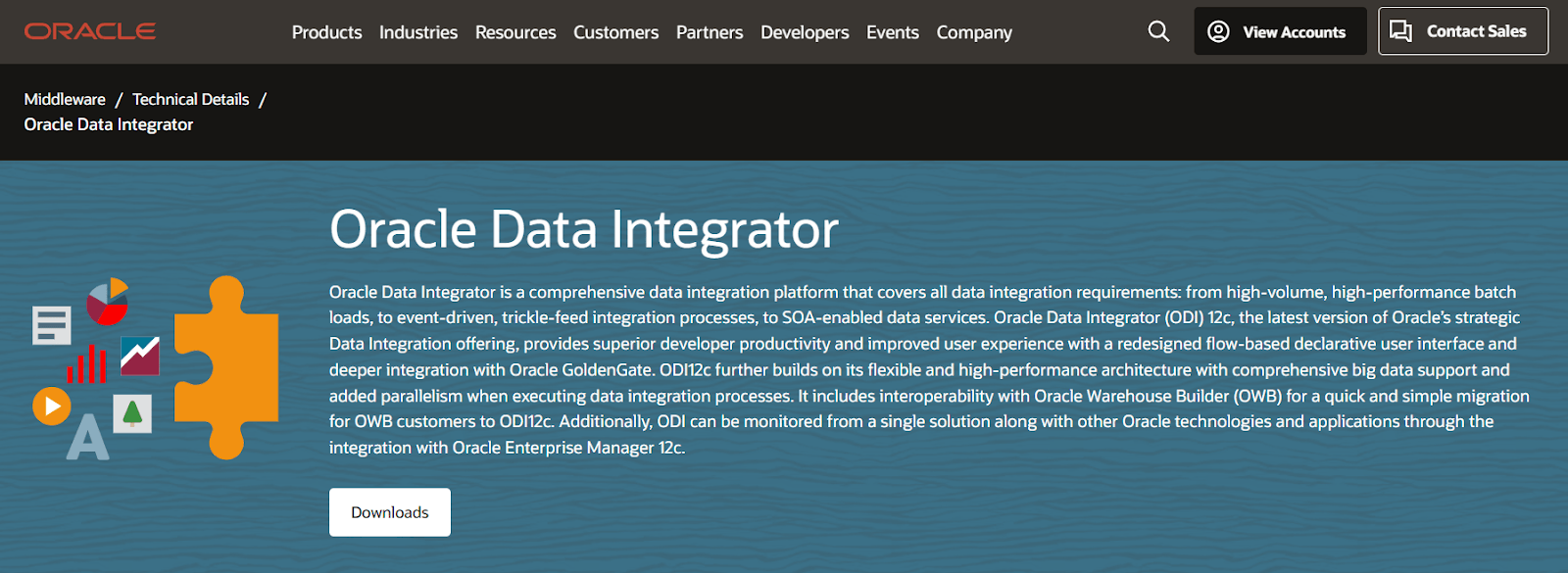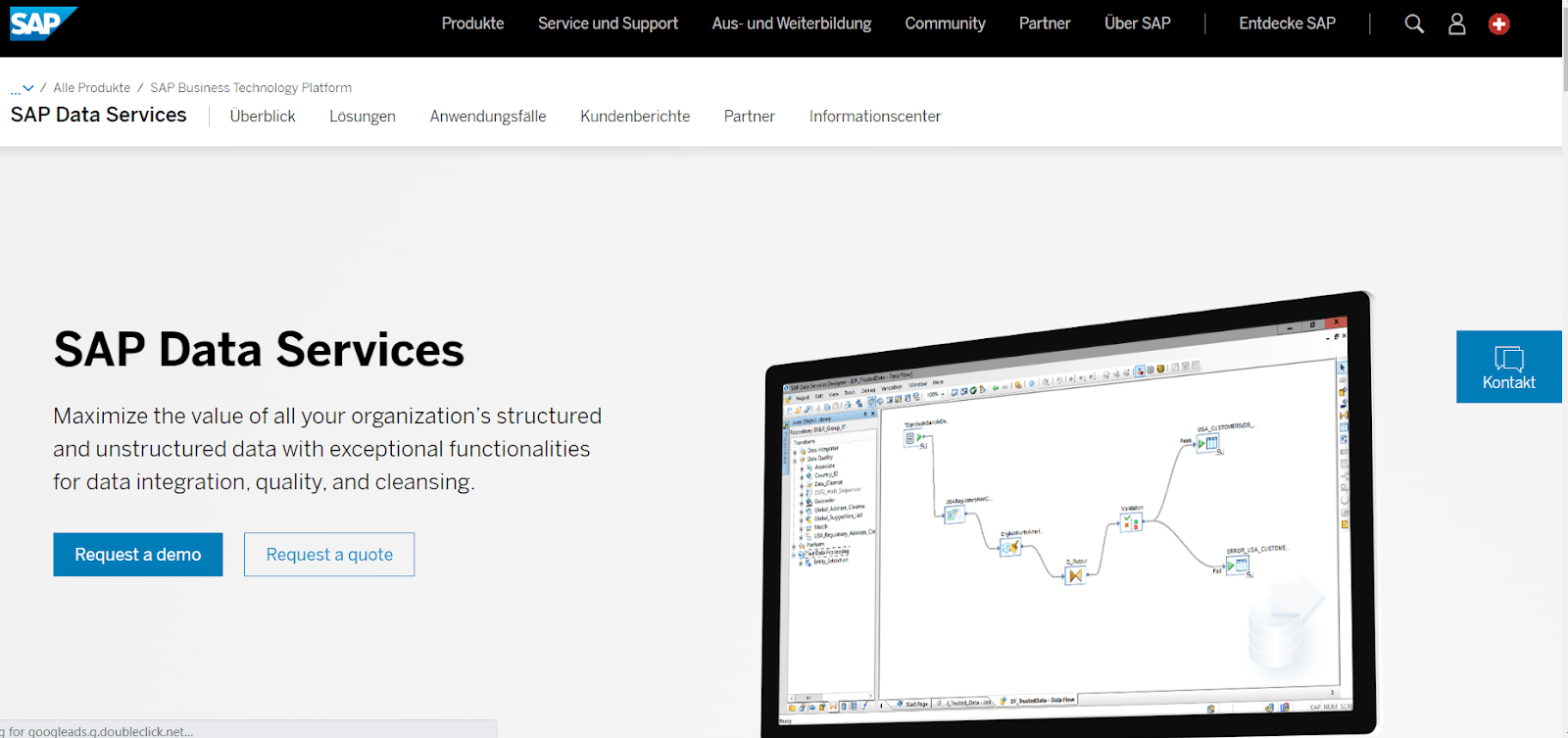Data integration ties together disparate data elements from different sources into a coherent, analyzable form. The right data integration platform not only bridges the gap between diverse datasets but also transforms your data into actionable insights.
Data integration tools are available in the market today to help you with the job. Each tool presents its unique features, strengths, and complexities, posing a challenge to make the perfect pick that aligns with your business needs. You might be tempted to rush and buy any random integration tool but you must precisely determine what you need and make an informed choice.
This is where our guide comes to your rescue. We will explore the 12 leading data integration platforms of 2024 that you should consider. By the end of this article, you’ll know what each tool has to offer along with their pros and cons. You’ll also learn how to choose the most suitable platform for your specific requirements.
What is Data Integration?
Data integration is a process of combining data from different sources into centralized storage. Using data integration, you can synchronize various digital tools and technologies into an accessible, unified platform. Centralized storage will help you with efficient data management, derive meaningful insights, and gain actionable business intelligence.
The data integration process involves the following steps:
- Determine your data requirements
- Collect, consolidate, transform, and store data
- Reconstruct data into usable information for reporting and analysis
Data integration helps businesses unify different organizational entities to enhance collaboration.
To learn more about data integration, you can visit these blogs:
Top 12 Data Integration Tools For Efficient Data Management & Seamless Data Flow
Different data integration tools can serve organizations of different sizes and varied needs. With the right tool, you can achieve better data quality, improved data governance, and enhanced BI capabilities.
So, let’s look at top data integration tools available in the market.
Here are our top 3 picks for the best data integration platforms of 2024:
Let's take a detailed look at each of our 12 best data integration tools and find the one that best suits your needs.
1. Estuary - Top Pick
Estuary Flow is our comprehensive, flexible, and scalable data integration platform with powerful real-time ETL and CDC capabilities. This top-tier data pipeline tool has an easy-to-use interface for instant data transfer and seamlessly integrates batch and real-time data for instantaneous data transfer from a variety of databases, SaaS, filestore, and other connectors.
Estuary Flow’s powerful data transformation capabilities allow you to clean, transform, and enrich your data. This ensures that your data is accurate and ready for analysis. We use industry-standard security measures to protect your data, including encryption, authentication, and authorization.
Flow is a reliable platform designed to meet the needs of even the most demanding businesses. It provides a simple low-code web app to create, manage, and monitor data flows. If you want to sync data between 2 different systems in real time, Flow is an excellent choice. It’s easy to connect to a wide range of data sources and destinations since it supports many connectors.
Pros
- On-the-fly transformations with SQL and TypeScript
- Real-time data replication and database migration capabilities
- Flexible and scalable platform suitable for businesses of all sizes
- Includes data governance and security features for sensitive data
- Intuitive, GUI-based web application for easy pipeline management
Cons
- Estuary Flow offers a high level of customization options which can sometimes be overwhelming for novice users
Pricing
Flow offers these flexible pricing plans:
- Free: Up to 2 tasks and 10 GB/month
- Cloud ($20/month): Up to 27GB/month for $20 then $0.75/GB
- Enterprise (Custom pricing): For large or custom deployments of Flow
If you want to get your data where you want it in milliseconds, try Estuary Flow for free. It provides a comprehensive data integration platform that is suitable for a variety of data integration tasks.
2. SQL Server Integration Services - Best For Microsoft SQL Server Users
SQL Server Integration Services (SSIS) is a part of the Microsoft SQL Server database software and is used for various data replication and integration tasks. SSIS is known for its speed and flexibility in a data warehouse environment, making it adept at tasks like data extraction, loading, and transformation.
SSIS supports data sources like SQL Server databases, Excel files, Oracle, and DB2 databases. It comes with graphical tools and wizards for workflow functions, like sending email messages, FTP operations, and setting data sources and destinations.
Pros
- Robust error and event handling
- Assists in cleaning and standardizing data
- Automates administrative functions and data loading
- Includes graphical user interface (GUI) for easy data transformation
- Streamlines the process of populating data marts and data warehouses
Cons
- Potential issues in non-windows environments
- Limited support for alternative data integration styles
Pricing
Custom pricing plans are available on demand.
3. Qlik - All-In-One Integration & Analytics Platform
Qlik provides both on-premise and cloud data integration services focused on automating real-time data delivery and transformation. It updates your data automatically and saves you from job scheduling or scripting.
It works with data sources like relational databases, SAP, mainframes, and SaaS applications, and it's compatible with platforms like Snowflake Data Cloud, and Databricks. It’s highly effective for tasks like analytics, machine learning, and digital transformation.
Qlik also provides services like data transformation, application automation, catalog and lineage tracking, and superior data architecture.
Pros
- Point-and-click pipeline configuration
- Provides full data lifecycle understanding and monitoring
- No-code interface for data transformation and workflow creation
- Real-time data movement from hundreds of sources to top cloud platforms
- Robust data architecture with scalability, security, and maintenance benefits
Cons
- Connection losses require a full reload
- The interface may be less intuitive for some users
- The help portal can be challenging to navigate for specific information
Pricing
Pricing plans for both on-premise and cloud solutions are available on demand.
4. Informatica PowerCenter - Most Ideal For Large Enterprises
Informatica PowerCenter is a GUI-based data integration tool. It’s a comprehensive platform that you can use for data integration, migration, and validation. You can combine all your business data into a trusted, unified view with zero-code data integration.
PowerCenter works on data integration through ETL architecture. It can connect to and fetch data from multiple heterogeneous sources and perform data processing. Some other PowerCenter solutions include data masking, data virtualization, and master data management.
If you have several legacy data sources that are primarily on-premise, Informatica’s PowerCenter is a good choice.
Pros
- Seamlessly scales with Big Data needs
- The debugger option helps identify failure points in data mappings
- Pipeline partitioning and push-down optimizations
- Helps synchronize geographically distributed team members
- Serverless deployment results in zero overhead
Cons
- Suitable mainly for midsize businesses and large enterprises
- Slightly expensive
- You must adapt your data architecture to the solution’s design
Pricing
Flexible pricing plans start from a base price of $2,000/month.
5. Hevo Data - Best For Quick Results
Hevo Data is a no-code data pipeline platform. It features a user-friendly GUI-based web application used for constructing and managing data pipelines. This web app functions as the central environment to create, monitor, and manage data flows.
Hevo Data’s generous offering of connectors facilitates seamless integration with a wide variety of data sources and destinations. These combined features render Hevo Data a dynamic solution, adept at handling data integration assignments of diverse scope and complexity
Pros
- It combines the capabilities of ELT, ETL, and Reverse ETL
- Automated and codeless data pipelines allow for on-the-fly transformations
- Includes robust data governance and security features to safeguard sensitive data
- Flexible and scalable platform that caters to small and medium businesses as well as enterprise-level operations
Cons
- Users have reported high CPU usage which can cause system slowdowns
- It is a specialized platform with a steep learning curve for some users to fully utilize its features
- The inability to schedule a pipeline job for a specific time of the day can limit the platform’s flexibility
- Only moves data in near-real-time or batches: no streaming support
Pricing
- Free: Limited to 1 million free events per month with free initial load, 50+ connectors, and unlimited models
- Starter ($239/mo): Offers 150+ connectors, on-demand events, and 12 hours of support SLA
- Business (Custom Pricing): HIPAA compliance with a dedicated data architect and dedicated account manager
6. SnapLogic - Most Effortless & Efficient
SnapLogic, or SnapLogic Intelligent Integration Platform, is a robust data integration tool with self-service functionality.
SnapLogic’s browser-based interface comes with 500+ pre-built modifiable connectors called Snaps. It is ideal for any non-technical person in an enterprise to build simple data pipelines. You don’t need to take any help from the IT or data departments for data integration with SnapLogic. Instead, you can use the vendor’s AI assistant, Iris, and the tool’s click-and-go feature for creating robust data pipelines.
Pros
- Runs automatic data quality checks in the background
- No technical knowledge is required to integrate a data source into a destination
- AI assistant to help integrate platforms
- Uses multiple graphs and charts to display ETL job progress
Cons
- Doesn’t provide a lot of customization or code introspections
- Focus of the pre-built connectors is only on enterprise SaaS apps
Pricing
Contact their customer support for pricing quotes.
7. Dell Boomi - Most Self-Scaling Platform
Dell Boomi is a cloud-based integration tool from Dell that helps connect your applications, data, and people to accelerate your digital transformation. It’s a data integration platform as a service (iPaaS) that supports on-premise, cloud, or even hybrid architectures.
The Boomi platform is self-managing, self-learning, and self-scaling. It is based on a flexible and scalable runtime layer and offers a complete range of subscribable services. You can select from a large library of pre-built application connectors and integration recipes to jumpstart your integrations. By plugging into Boomi connectors, you can eliminate the time-consuming task of data exchange between applications.
Pros
- Self-managing, self-learning, and self-scaling
- Automation of data transformation
- Provides real-time automatic updates
- Supports all-size organizations, from small businesses to enterprises
- Supports 180+ software for easy integration with industry-leading software
Cons
- Doesn’t scale well for Big Data use cases
- Connectors like Excel and CSV files are missing
- Advertising SaaS platforms are missing
- Lacks parallelization and messaging features for real-time data streaming
Pricing
Customers are charged a monthly subscription fee based on the number of features and connectors used. You can request a quote on the website.
8. ZigiOps - Most Reliable Data Integration Tool
ZigiOps is a flexible, no-code data integration tool that connects various systems swiftly without the need for coding. It’s available in both PaaS and on-premises versions, offering automation of workflows and data synchronization between IT Service Management, Monitoring, DevOps, Cloud, and CRM systems.
With the ZigiOps platform, your organizations can save up to 150K USD per year by automating manual processes. The platform can also reduce the time to resolve issues by 30% through real-time data transfer between teams.
Pros
- With 99.9% uptime, ZigiOps ensures reliable operation
- It integrates with over 300 popular systems in various domains
- It adheres to best security practices and doesn't store any of your information
- The platform offers unlimited scalability which is ideal for growing businesses
Cons
- Limited support is available for Big Data platforms and technologies
- Customization options may not be as extensive as some other platforms
- Require technical support or consulting services for more complex integrations
Pricing
ZigiOps pricing starts at $800 per month.
9. Talend - Most Trusted By Leading Brands
Talend is a data integration and management platform. It offers two products—Talend Data Fabric and Stitch. Talend Data Fabric is a unified platform for reliable and accessible data. And Stitch is a fully-managed data pipeline for analytics.
However, Talend also has an open-source solution, Talend Open Studio, that can help you kickstart your first data integration and ETL projects. You can use Talend Open Studio for data processes that require lightweight workflows. But, if you’d like to move large amounts of data, requiring massive resources, Talend Open Studio might not be a good choice.
Pros
- Helpful in building scalable ELT and ETL data pipelines
- Capable of both simple and complex transformations
- Helps you visualize data pipelines
- Over 800+ connectors to help integrate data and business endpoints
Cons
- Several Big Data features are not available in the open-source version
- Writing transformations is labor-intensive
- Lacks proper documentation
Pricing
Pricing quotes are available on demand.
10. Jitterbit Harmony - Best For Beginners
Jitterbit is a cloud integration solution that allows you to connect applications, data, and systems effortlessly. It offers Jitterbit Harmony a low-code integration platform that enables you to create data workflows without writing code. It has pre-built templates that help you quickly move common business processes with the right kind of transformation.
You can also use its management console to get an overview of all the data integration tasks. So, you can monitor, manage, and control all your data flow tasks from one place.
Pros
- Suitable for small businesses and large enterprises
- Scripting option for extended capabilities in integration
Cons
- Lacks intuitive UI
- Higher price than other ETL tools
11. Oracle Data Integrator - Best For Uninterrupted Data Access
Oracle Data Integrator (ODI) is one of the most renowned data integration tools. It provides uninterrupted data access across multiple systems. Whatever could be your data integration requirements, ODI covers it all. You can use it for high-volume, high-performance batch loads, or event-driven trickle-feed integration processes.
ODI features seamless data integration for SaaS and SOA-enabled data services. It also automatically detects faulty data during the data load and transform processes. Upon seeing faulty data, ODI recycles it before loading it again.
If you have an existing Oracle ecosystem with large volumes of data on different sources, consider using ODI.
Pros
- Easy-to-use interface
- Vast choice of transformation options
- Impressive scalability and performance
Cons
- More expensive than peer integration tools
Pricing
Custom price quotes are available on demand.
12. SAP Data Services - Enterprise-Grade Solutions
SAP Data Services is an information management layer of SAP’s Business Technology Platform. However, you can use SAP Data Services as a standalone solution as well.
With SAP Data Services, you can access, transform, and connect data to benefit critical business processes. One of the key features of SAP Data Services is that it allows you to process text data. As a result, you can unlock meaningful insights into unstructured data.
Pros
- Can be used for structured and unstructured data
- Simple maintenance
- Ready-to-use social media connectors
Cons
- Error descriptions can be improved
- Very technical—difficult to use for people without technical knowledge
- Debugging process isn’t simple
Pricing
Contact customer support to get a price quote.
How To Pick The Best Data Integration Platform: 5 Points To Consider
With so many options to choose from, it can be difficult to decide which data integration solution is right for you. Here are a few things to consider when choosing a data integration platform:
Connector Library & Integration Capabilities
The platform should have a broad connector library for seamless data extraction from various sources, supporting both cloud-based and on-premise applications and real-time updates.
Security, Compliance, & Additional Data Services
The tool must adhere to strict security standards, including encryption, access control, and detailed logging. Additional services like big data management and governance can add value.
Intelligence, Usability, & Support
Choose a user-friendly platform that supports rule-based operations for better data processing speed and accuracy. It should come with strong customer support and extensive documentation.
Reliability, Speed, & Scalability
Look for a fast, dependable tool capable of reliable data synchronization. It should scale efficiently to meet future data needs with cloud-based options usually offering better scalability.
Cost Transparency
Understand all costs associated with the tool, including licensing, usage fees, and time costs related to automation, learning, debugging, and maintenance.
Conclusion
The right data integration platform will help you integrate, transform, and move data between various endpoints. However, selecting the best data integration tool based on your requirements is key to streamlining your data flow tasks. Every tool has its advantages and disadvantages. So evaluating its pros and cons thoroughly will help you make the right decision for your organization.
If you want to explore a no-code platform that can help you harness the power of real-time and batch data integration at scale, Estuary Flow could be your perfect match. It provides a unified platform for integrating data from multiple sources and supports a wide range of data formats, including structured, semi-structured, and unstructured data.
With its real-time capabilities, you can work with up-to-date information and make fast decisions. It's easy to use, flexible, and can connect with existing systems seamlessly.
To benefit from our reliable and user-friendly platform for your data integration needs, sign up now for free or contact our team to discuss your unique requirements.


